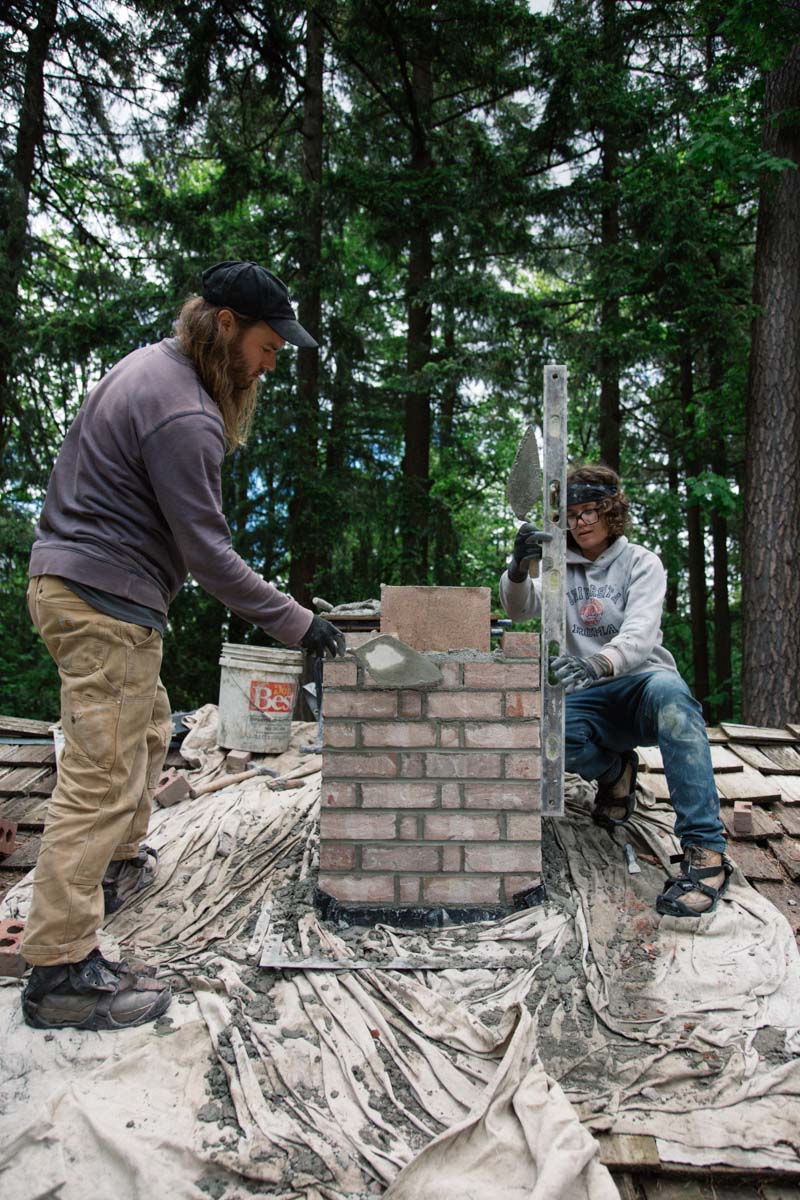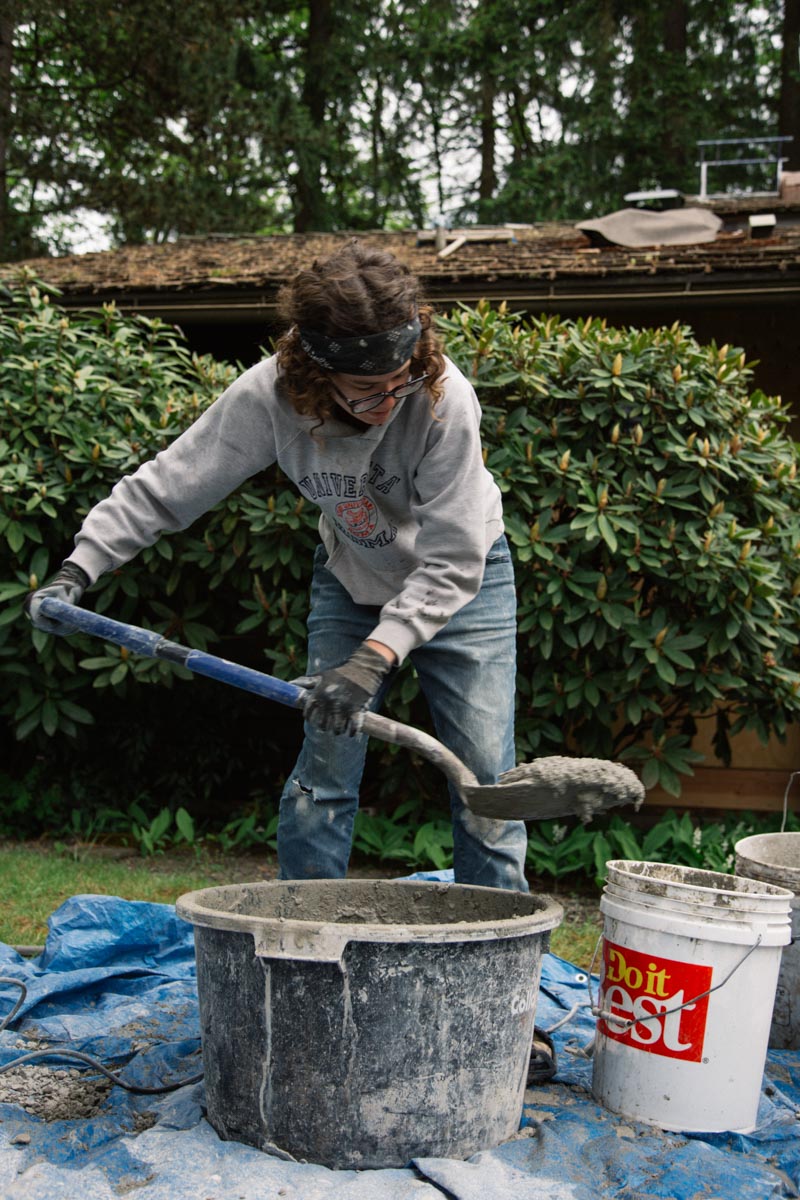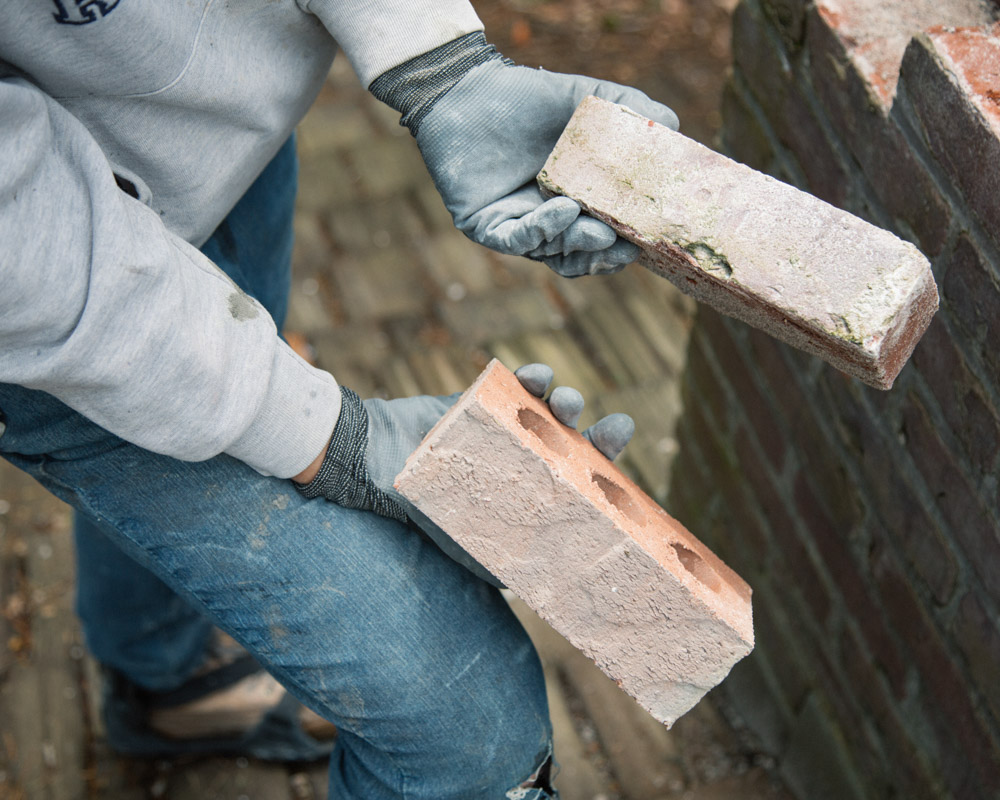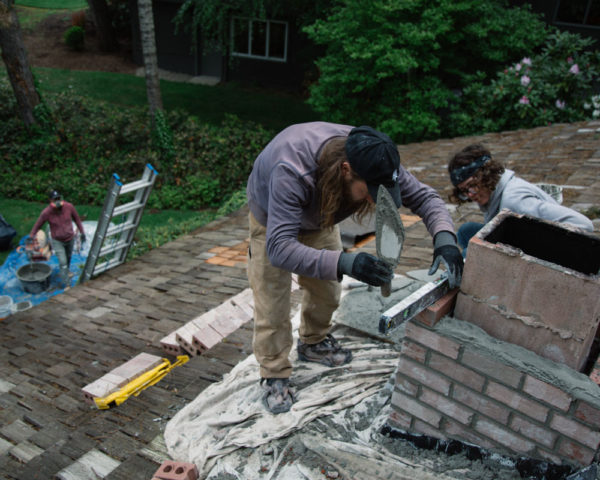Carly moved to Portland in 2014 and answered a Craigslist ad for a masonry laborer. She had earned a degree in advertising, but quickly realized she didn’t like sitting at a computer all day. The hands-on, physical work of chimney masonry hooked her, as did its straightforward utility: “It’s integral to living in a society, and you see the difference that you’ve made.”
Working in the building trades has made Carly question the low status of blue collar work. She wants to make the trades more accessible, respected, and ultimately better paid, especially for women.
“You don’t expect to see a woman in construction. Construction was never an option for me, realistically. No one ever said you could be a construction worker. And when I was I hired, I had to put an eighty pound bag of mortar on my should to prove I could do it.”
“I want to bring awareness to people doing invisible labor. You can tell who realizes that the chimney trade is hard work, and who doesn’t, because some people offer us a bathroom or water and some don’t. Sometimes their neighbors will offer us water and coffee, and invite us inside. The homeowner rarely will, because they’re already spending a lot of money for us to be there. And so they think they’re taking the hit.”


Good weather for bricklaying. Too hot and dry, and the bricks cure the mortar too fast. Too wet and the cure time is too long.
For a homeowner, chimney masons often deliver bad news– an expensive and unexpected repair.
“People want to have fires around Christmastime. Especially in such a moderate climate as Portland, where fireplaces don’t get used a lot. So people get their chimneys swept. They clean and they’ll do an inspection.”
If the chimney sweep finds problems, then a chimney mason gets called. Chimneys fail because of poor design, craftsmanship or neglect. The bricks and mortar leave a record of the construction process– sloppy construction shows, and affects the life of the chimney. Chimneys on the west coast were usually constructed without a liner– a potential fire hazard that must be corrected before the fireplace can be used safely.
“In the Pacific Northwest, it wasn’t so widely known when you have a chimney, you needed an exterior liner that protects from weather and an interior liner that keeps the heat inside the chimney flue, to keep it from starting fires in your house. We tell people it’s not going to be safe to burn in this chimney unless we line it, which is quite expensive.”
Chimneys also need to be sealed against water, a maintenance task every ten years that is often neglected.
“Water is your chimney’s worst nightmare. Water creates moss, moss allows more water. I’ve seen moss completely replace a mortar joint. You scrape the moss out and you can pull the brick out with your bare hands. It’s pretty crazy.”
Repairs can be made if the mortar is still bonded to the brick, through a process of grinding out damaged mortar and replacing it called tuckpointing. But if the bricks and mortar have separated, the chimney must be rebuilt:
“Bricks and mortar have a bond. If that bond is broken, it would be difficult to repair effectively. If the bricks absorb water, they will often absorb it all the way to the back and leak into the interior of the structure. If we can tuckpoint we will. But if we find the brick is loose and not bonded to the mortar, we refuse to tuckpoint. It will only last a couple years so we won’t do it.

New brick vs old. Sometimes old bricks can be removed and reused, but in this case, new bricks are being used.
“People are wary of these specialized crafts. Often times I feel like a mechanic when I try to explain it to people. You know, it’s hard to trust your mechanic, because you know nothing of a car. People know nothing of masonry and brick bonds. When I bid people’s chimneys, I take photos, If their bricks are not bonded, I will pull one off, and I’ll take a video of it. I try to show as much info as possible.”
Chimney repair is complicated, detail-oriented work, like monitoring the water content of bricks so that mortar will cure properly, mixed with physical labor like hauling buckets of bricks and mortar up and down ladders. It hasn’t changed much over time; it’s still trowels, levels and plumb lines, and each brick is still placed by hand. Carly likes the work, but doesn’t romanticize the process:
“It’s hard work and we don’t get paid to have enough to have a bunch of research and development to make it easier. If they can figure out how to build chimneys with machines, then that’s great.”
